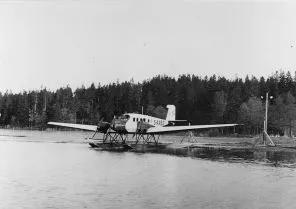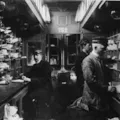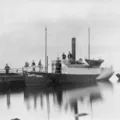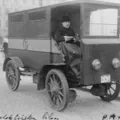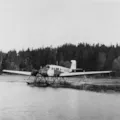By air
Sending mail by air is not particularly modern – the ancient Egyptians used carrier pigeons. The bird of peace was used for postal transport through the Second World War.
However, using machines to send mail by air is – in our history – rather new. The Danes tried to use small, unmanned balloons to send messages to occupied Själland as far back as the early 19th century but, since the balloons could only fly in one direction (i.e. with the wind), the attempt was limited. The same sort of balloons were also used during Denmark’s war with Sweden around 1808-09 to send propaganda across the channel.
The first airmail service in 1919
The first official Danish airmail service – this time with an airplane – was made in 1919, and the first scheduled Swedish airmail service opened in 1920. Sweden also experimented with airborne travelling post offices, but the costs for attendant postmen were too high and the experiment was discontinued.
Increased by the 1930s
Airmail service had truly taken off by the 1930s. Today, it constitutes a major portion of postal service around the world. Due to the environmental impact of air transport, an increasing amount of letter and parcel volumes has been transferred to other transport solutions, primarily rail.
